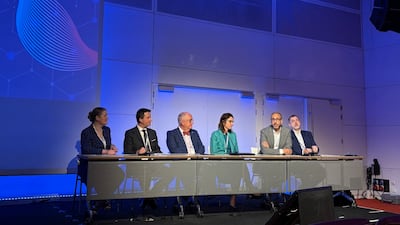The European Medicines Agency is continuing the transition to the IRIS submission management system by making its use mandatory for life cycle management (LCM) procedures such as variations and transfers of marketing authorizations (MAs) for a first subset of products from 23 January.
The IRIS platform, which was first launched in 2018, can currently be used by applicants to prepare, submit and manage applications and/or data for various scientific procedures such as orphan designation applications, scientific advice, Innovation Task Force meeting requests, marketing status reports and inspections.
It also allows applicants to request PRIME (priority medicines) designations and meetings and to ask for PRIME designations to be withdrawn or transferred.
Human and veterinary regulatory procedures are now starting to be migrated to IRIS, which will become the new submission management system and communication portal between the EMA, the EU regulatory network and applicants, the agency said in new guidance published on 19 January.
Bringing regulatory procedures onto the IRIS platform will lead to “process simplification and standardization” for marketing authorization holders and allow the decommissioning of the current submissions system, SIAMED, the EMA added.
The regulatory procedures that have just been transferred into IRIS are variations, Article 61.3 notifications (labeling changes) and marketing authorization transfers for a subset of about 110 human and veterinary medicines with “low regulatory complexity,” it said.
“Impacted industry and network stakeholders have already been provided with the final list of products,” according to a post on the IRIS forum by the EMA’s Regulatory Procedure Management (RPM) for Product Lifecycle Management (PLM) team.
It said this “significant achievement” followed a “meticulous testing phase, including a successful second round of testing in November 2023, building upon initial testing conducted in May and June 2023.”
During the rest of 2024, work will focus on adding new functionalities and procedures to IRIS. These will include periodic safety update reports (PSURs), post-authorization measures (PAMs), post-authorization safety studies (PASS), line extensions, renewals, annual reassessments and referrals. “The roll-out for these procedures on IRIS is scheduled for Q4 2024,” the team said.
Centralized Products Only
The transition to the IRIS platform affects only centrally authorized products (CAPs), and there are no current plans to extend it to nationally authorized products (NAPs), according to the EMA’s guidance.
“However, there is a small subset of NAPs that are included in procedures overseen by EMA,” it notes. Examples include variation worksharing with products approved through national, mutual recognition and decentralized procedures, single assessments of PSURs that may exclusively relate to NAPs for human use, as well as some referrals and post-authorization safety studies. “It follows that, for these specific cases, NAPs will also be affected by IRIS in future.”
Other Portals Remain
IRIS will not replace the current eSubmission Gateway, the agency said. Both will coexist, “each serving specific functions, and the current submission process through the Gateway will continue.”
The eSubmission Gateway allows applicants to submit documents supporting all types of applications for human and veterinary medicines to the agency securely over the internet in structured and non-structured formats.
Nor will IRIS replace the Product Lifecycle Management (PLM) Portal, which is an online portal for managing electronic Application Forms (eAFs), electronic Product Information (ePI) and authorized product data in the EU, in collaboration with the European medicines regulatory network.
The PLM portal is for data submission, while IRIS is used for submission management, including data interaction, the agency explained. The PLM portal provides access to the web-based eAF and hosts the form's creation and the submission package’s gateway, while IRIS “generally serves as the platform for the actual procedure exchange and work for CAPs.”
“As a result, distinct teams operate concurrently on the eAF and IRIS, even though they are both part of the Product Lifecycle Management Value Stream.”
As for why there are different portals for creation, submission, and submission management, the agency said they served different purposes and had distinct protocols. “We are actively working to enhance the user experience and streamline interactions between them to prevent duplication of processes and data input.”
General IRIS Guidance
The EMA has also published separate guidance for applicants on how to create, submit and manage IRIS applications, which covers the variations and MA transfers described above as well as all other procedures already managed through IRIS.





